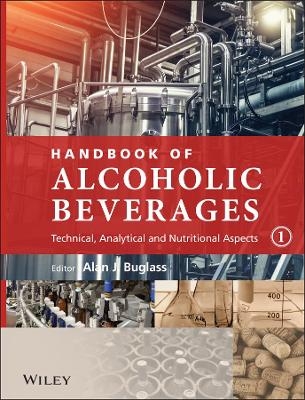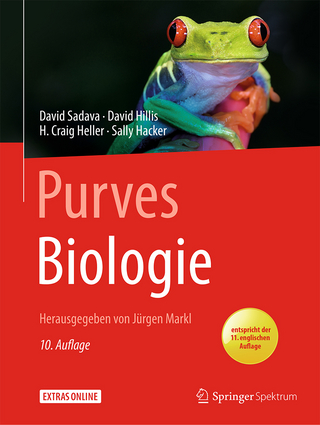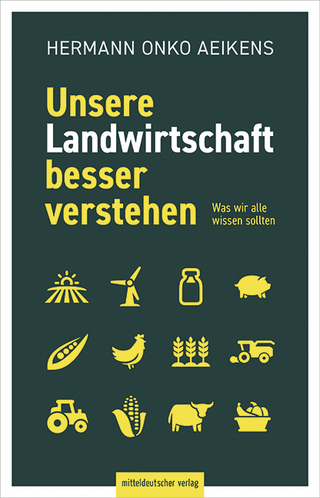
Handbook of Alcoholic Beverages, 2 Volume Set
John Wiley & Sons Inc (Verlag)
978-0-470-51202-9 (ISBN)
- Titel z.Zt. nicht lieferbar
- Versandkostenfrei innerhalb Deutschlands
- Auch auf Rechnung
- Verfügbarkeit in der Filiale vor Ort prüfen
- Artikel merken
HANDBOOK OF ALCOHOLIC BEVERAGES A comprehensive two-volume set that describes the science and technology involved in the production and analysis of alcoholic beverages
HANDBOOK OF ALCOHOLIC BEVERAGES
Technical, Analytical and Nutritional Aspects
At the heart of all alcoholic beverages is the process of fermentation, particularly alcoholic fermentation, whereby sugars are converted to ethanol and many other minor products. The Handbook of Alcoholic Beverages tracks the major fermentation process, and the major chemical, physical and technical processes that accompany the production of the world’s most familiar alcoholic drinks. Indigenous beverages and small-scale production are also covered to a significant extent.
The overall approach is multidisciplinary, reflecting the true nature of the subject. Thus, aspects of biochemistry, biology (including microbiology), chemistry, health science, nutrition, physics and technology are all necessarily involved, but the emphasis is on chemistry in many areas of the book. Emphasis is also on more recent developments and innovations, but there is sufficient background for less experienced readers. The approach is unified, in that although different beverages are dealt with in different chapters, there is extensive cross-referencing and comparison between the subjects of each chapter.
Appropriate for food professionals working in the development and manufacture of alcohol-based drinks, as well as academic and industrial researchers involved in the development of testing methods for the analysis and regulation of alcohol in the drinks industry.
Divided into five parts, this comprehensive two-volume work presents:
INTRODUCTION, BACKGROUND AND HISTORY: a simple introduction to the history and development of alcohol and some recent trends and developments.
FERMENTED BEVERAGES: BEERS, CIDERS, WINES AND RELATED DRINKS: the latest innovations and aspects of the different fermentation processes used in beer, wine, cider, liqueur wines, fruit wines, low-alcohol and related beverages.
SPIRITS: covers distillation methods and stills used in the production of whisky, cereal- and cane-based spirits, brandy, fruit spirits and liqueurs.
ANALYTICAL METHODS: covering the monitoring of processes in the production of alcoholic beverages, as well as sample preparation, chromatographic, spectroscopic, electrochemical, physical, sensory and organoleptic methods of analysis.
NUTRITION AND HEALTH ASPECTS RELATING TO ALCOHOLIC BEVERAGES: includes a discussion on nutritional aspects, both macro- and micro-nutrients, of alcoholic beverages, their ingestion, absorption and catabolism, the health consequences of alcohol, and details of the additives and residues within the various beverages and their raw materials.
Editor Alan J. Buglass Department of Chemistry, KAIST, Republic of Korea
List of Contributorsxv
General Acknowledgments and Thanksxvii
Volume 1
1 Introduction, Background and History 1
John A. Hudson and Alan J. Buglass
1.1 Alcoholic Beverages of the World: An Introduction to the Contents of This Book 3
1.2 History and Development of Alcoholic Beverages 12
1.2.1 The Beginnings (From the earliest Times to ca. 1100 AD) 12
1.2.2 Medieval Times and Beyond (ca. 1100–1750) 18
1.2.3 The Industrial Revolution and the Influences of Science and Technology (ca. 1750–1900) 24
1.2.4 Modern Times and Newer Processes (ca. 1900–Present Day) 28
1.2.5 The Development of Analytical Methods 35
References 40
1.3 Some Recent Trends and Developments 42
1.3.1 Overview 42
1.3.2 Big is Beautiful: Multinational Companies and the Globalization of Alcoholic Beverages 42
1.3.3 Small is Beautiful: The Growth in Microbreweries and Craft Breweries and the Localization of Products 44
1.3.4 Revival of Traditional Beer Styles 45
1.3.5 Changes in Beer Drinking Habits 47
1.3.6 Global Growth in Wine Drinking 48
1.3.7 Development of New Wine Industries 50
1.3.8 Revival of Cider and Perry: the Magic of Ice 52
1.3.9 The Rise of Flavored Alcoholic Beverages (‘Alcopops’) 52
1.3.10 Calorie-Counting and Health Perception of Alcoholic Drinks 53
1.3.11 Binge Drinking 54
1.3.12 Organic and Biodynamic Production of Alcoholic Beverages 56
1.3.13 Use of Genetically Modified (GM) Crops and Microorganisms 57
References 59
2 Fermented Beverages: Beers, Ciders, Wines and Related Drinks 63
Marianne McKay, Alan J. Buglass and Chang Gook Lee
2.1 Introduction: Overview of Fermentation and Microorganisms 65
2.1.1 Yeasts 67
2.1.2 Lactic Acid Bacteria 69
2.1.3 Molds and Spoilage Organisms 69
References 70
2.2 Alcoholic Fermentation 72
2.2.1 Introduction 72
2.2.2 Physiology and Morphology of Yeast 72
2.2.3 Nutritional Requirements of Yeast 73
2.2.4 The Use of Naturally Occurring (‘Wild’) Yeasts in Fermentations 75
2.2.5 The Killer Factor 76
2.2.6 The Use of Selected (Cultured) Yeast Strains 76
2.2.7 Fermentation Vessels 77
2.2.8 The Growth of a Yeast Population 77
2.2.9 An Overview of Alcoholic Fermentation 80
2.2.10 Flocculation 87
2.2.11 Aroma Compounds and Fermentation 88
References 93
2.3 Malolactic Fermentation 96
2.3.1 Introduction 96
2.3.2 Malolactic Bacteria: Morphology and Physiology 97
2.3.3 Identification of Malolactic Bacteria 98
2.3.4 Factors Affecting the Growth of Malolactic Bacteria 98
2.3.5 Interactions Between Bacteria and Other Organisms 100
2.3.6 Spontaneous Malolactic Fermentation 101
2.3.7 Inoculation with MLB Starter Culture 101
2.3.8 The Growth of Bacterial Populations 102
2.3.9 The Malolactic Fermentation Process 103
2.3.10 Production of Diacetyl 104
2.3.11 Microbial Stability 104
2.3.12 Monitoring Malolactic Fermentation 105
2.3.13 Finishing and/or Preventing Malolactic Fermentation 105
2.3.14 Production of Biogenic Amines by Malolactic Bacteria 106
2.3.15 Other Effects of MLF 106
2.3.16 Malolactic Fermentation and Aroma 107
2.3.17 Lactic Spoilage 111
References 112
2.4 Acetic and Other Fermentations 114
2.4.1 Introduction 114
2.4.2 Acetic Acid Bacteria 115
2.4.3 Lactic Acid Bacteria 117
2.4.4 The Activities of Yeasts other than Saccharomyces 117
2.4.5 Film Forming Yeasts 119
2.4.6 Molds 120
2.4.7 Prevention of Spoilage 120
References 121
2.5 Preservatives Used in the Production of Alcoholic Beverages 123
2.5.1 Introduction 123
2.5.2 Sulfur Dioxide (SO 2) 123
2.5.3 The Roles of SO 2 125
2.5.4 Sorbic Acid 128
2.5.5 DMDC (Velcorin) 129
2.5.6 Ascorbic Acid (Vitamin C) 129
2.5.7 Pimaricin (Natamycin) 130
2.5.8 Other Preservatives 130
References 131
2.6 Beer 132
2.6.1 The Basic Brewing Processes 132
2.6.2 Malting and Mashing 134
2.6.3 Boiling the Wort 148
2.6.4 Fermentation 157
2.6.5 Top Fermentation 163
2.6.6 Bottom Fermentation 167
2.6.7 Other Fermentations 169
2.6.8 Modern Methods of Fermentation 171
2.6.9 Beer Treatment: Fining, Filtration and Pasteurization 173
2.6.10 Packaging of Beer: Casking, Kegging, Bottling and Canning 182
2.6.11 Dispensing of Draught Beers 186
2.6.12 Oxidation and the Staling of Beer 192
2.6.13 Beer styles 196
References 207
2.7 Cereal-based and Other Fermented Drinks of Asia, Africa and Central/South America 211
2.7.1 The Rice ‘Wines’ of Asia 212
2.7.2 Native Fermented Drinks of Africa and South America 222
References 229
2.8 Cider and Perry 231
2.8.1 Introduction 231
2.8.2 The Basic Ingredients 233
2.8.3 Harvesting, Crushing and Pressing 238
2.8.4 Fermentation and Maturation 241
2.8.5 Traditional and Small-Scale Cider and Perry Production: Fermentation and Beyond 245
2.8.6 Large-Scale (Factory) Production of Cider and Perry: Fermentation and Beyond 251
2.8.7 Newer Techniques, Recent Developments and Innovations 254
2.8.8 Cider and Perry from Around the World 257
References 263
2.9 Wine 266
2.9.1 White Winemaking 267
2.9.2 Red Wine Production 300
2.9.3 Sparkling Wines 324
2.9.4 Fining, Filtration and Clarification 343
2.9.5 Wine Maturation and Ageing 354
2.9.6 Some Current Trends in Wine Production 371
References 377
2.10 Fortified Wines and Liqueur Wines 383
2.10.1 Overview and Scope 383
2.10.2 Sherry and Other Flor Wines 384
2.10.3 Flor and Oxidation in Sherry Wines 391
2.10.4 Other Flor Wines 394
2.10.5 Madeira 395
2.10.6 Estufagem and Cask Maturation of Madeira Wine 397
2.10.7 Port 399
2.10.8 Marsala and Málaga 408
2.10.9 Vins Doux Naturels, Liqueur Muscat and Similar Wines 409
2.10.10 Vins de Liqueurs and Similar Beverages 414
References 416
2.11 Fruit Wines and Other Nongrape Wines 419
2.11.1 Overview and Scope 419
2.11.2 Comparison of Fruit for Winemaking 420
2.11.3 Making Fruit Wines 423
2.11.4 Country Wine Styles 429
2.11.5 Mead 432
References 434
2.12 Aromatized Wines 436
2.12.1 Introduction and Brief History of Aromatization of Wine 436
2.12.2 Vermouth 437
2.12.3 Other Aromatized Wines and Apéritifs 444
References 445
2.13 Low Alcohol and Non-Alcoholic Beers, Ciders and Wines 447
2.13.1 Overview 447
2.13.2 Production of Low Alcohol Beverages by Limited or Checked Alcohol Methods 448
2.13.3 Dealcoholization Methods 450
References 453
3 Distilled Spirits 455
Alan J. Buglass, Marianne McKay and Chang Gook Lee
3.1 Introduction: Distillation Methods and Stills 457
3.1.1 A Brief History and Theory of Distillation 457
3.1.2 Batch Distillation 461
3.1.3 Continuous Column Distillation 466
References 468
3.2 Scotch Whisky 469
3.2.1 Introduction and Brief History 469
3.2.2 The Raw Materials 475
3.2.3 Malting, Mashing, Cooking and Fermentation 479
3.2.4 Distillation 487
3.2.5 Maturation, Blending and Other Postdistillation Processes 491
3.2.6 The Flavor and Styles of Scotch Malt Whiskies 498
References 512
3.3 Whiskeys 515
3.3.1 Scope 515
3.3.2 Irish Whiskey 516
3.3.3 The Whiskeys of America 519
3.3.4 Bourbon and Tennessee Whiskey 520
3.3.5 American Rye and Corn Whiskies 527
3.3.6 Whiskies from Other Countries 528
References 533
3.4 Other Cereal Based Spirits 535
3.4.1 Introduction and Scope 535
3.4.2 Gin and Similar Juniper Flavored Spirits 535
3.4.3 Akvavit (Aquavit) and Vodka 541
3.4.4 Asian Grain Spirits 543
References 553
3.5 Cane Spirits, Vegetable Based Spirits and Aniseed Flavored Spirits 555
3.5.1 Overview and Scope 555
3.5.2 History and Basic Description of Rum and Cachaça 556
3.5.3 Fermentation and Distillation Practices in the Production of Cachaça and Rum 560
3.5.4 Flavor Characteristics of Rum and Cachaça 564
3.5.5 Arrack, Mezcal and Tequila 566
3.5.6 Aniseed Flavored Spirits 570
References 572
3.6 Brandy 574
3.6.1 Introduction and Brief History 574
3.6.2 Cognac 585
3.6.3 Armagnac 588
3.6.4 Other Brandies 589
3.6.5 Quality Control in Brandy Production 591
3.6.6 Evaluating Brandy 591
References 593
3.7 Grape and Other Pomace Spirits 595
3.7.1 Introduction 595
3.7.2 Production of Pomace Spirits 596
3.7.3 Types of Pomace Spirits and Sensory Characteristics 598
References 600
3.8 Fruit Spirits 602
3.8.1 Introduction 602
3.8.2 Apple and Pear Spirits 603
3.8.3 Fruit Spirits of Central Europe 608
3.8.4 Plum Spirits of Eastern Europe 611
3.8.5 Other Fruit Spirits 612
References 613
3.9 Liqueurs and Their Flavorings 615
3.9.1 Introduction and Scope 615
3.9.2 Fruit and Fruit Flavored Liqueurs 617
3.9.3 Flower, Herb, Spice and Bitter Liqueurs 620
3.9.4 Cocoa, Coffee and Tea Liqueurs 624
3.9.5 Nut and Emulsion Liqueurs 624
3.9.6 Production and Use of Essences and Concentrates 625
References 626
Volume 2
4 Analytical Methods 629
Alan J. Buglass and Darren J. Caven-Quantrill
4.1 Introduction 631
4.1.1 Why Analyze Alcoholic Beverages? An Overview of the Need for Analysis 632
4.1.2 Process Monitoring 633
4.1.3 Identification of Origin, Determination of Authenticity and Detection of Fraud 636
4.1.4 Determination and Characterization of Beverage Components and Processes 639
4.1.5 Development of New Analytical Methods 642
References 645
4.2 Extraction and Focusing Methods in Sample Preparation 647
4.2.1 Overview 647
4.2.2 Liquid Extraction Techniques 648
4.2.3 Distillation Methods 659
4.2.4 Solid Phase Extraction and Related Methods (Sorption Techniques) 664
4.2.5 Headspace Methods 684
4.2.6 Combinations of Methods (With Particular Application to Enological Products) 688
4.2.7 Summary 690
References 690
4.3 Chromatographic Methods 705
4.3.1 Thin Layer Chromatography and Related Methods 706
4.3.2 Capillary Gas Chromatography 709
4.3.3 Liquid Chromatography 722
4.3.4 Counter Current Chromatographic Methods 752
References 755
4.4 Spectroscopic Methods 765
4.4.1 Nuclear Magnetic Resonance 767
4.4.2 Infrared Spectroscopy 784
4.4.3 Colorimetry, UV-Visible Spectroscopy and Fluorometry 793
4.4.4 Atomic Absorption and Emission Spectroscopy 814
4.4.5 Mass Spectrometry 825
References 843
4.5 Electrochemical Methods 855
4.5.1 Potentiometric Methods 856
4.5.2 Voltammetric Methods 863
4.5.3 Electrochemical Sensors 869
References 873
4.6 Other Methods 877
4.6.1 Electrophoretic Techniques 877
4.6.2 Flow Injection Techniques 889
4.6.3 Chemical and Physical Methods 896
References 907
4.7 Sensory Analysis 913
4.7.1 Introduction 913
4.7.2 Olfaction and Taste 914
4.7.3 Odor Theshold, Odor Activity and Low Impact Odorants 922
4.7.4 Sensory Tests 925
References 930
5 Nutritional and Health Aspects 933
Nigel J. Fuller, Suk Hean Lee and Alan J. Buglass
5.1 General Introduction 935
5.1.1 ‘Alcohol’ in Perspective 936
5.1.2 The Extent and General Implications of Alcoholic Beverage Consumption 938
5.1.3 Ingredients, Processing and the Nutrient Content of Alcoholic Beverages 941
5.1.4 Nutritional Considerations 943
5.1.5 Summary 946
References 946
5.2 Factors Influencing the Nutrient Content of Alcoholic Beverages 949
5.2.1 Wines 951
5.2.2 Beers 952
5.2.3 Cider and Perry 955
5.2.4 Distilled Beverages 955
5.2.5 Fortified wines 957
5.2.6 Alcopops 958
5.2.7 Cocktails 958
References 959
5.3 Macronutrient Content of Alcoholic Beverages 961
5.3.1 Water 963
5.3.2 Alcohol 966
5.3.3 Carbohydrates (Including Fiber) 967
5.3.4 Nitrogenous Compounds: Proteins, Peptides, Amino Acids, Amines and Nucleotides 970
5.3.5 Lipids 972
References 973
5.4 Micronutrient Content of Alcoholic Beverages 975
5.4.1 Vitamins 977
5.4.2 Electrolytes and Functional Elements (Minerals and Trace Elements) 981
5.4.3 Phytochemicals 986
References 990
5.5 Alcohol Ingestion, Absorption and Catabolism: Metabolic and Nutritional Consequences 993
5.5.1 Alcohol Catabolism 994
5.5.2 Methanol Catabolism 997
5.5.3 Effects of Alcohol on Intake of Foods and Energy 997
5.5.4 Consequences for Intermediary Metabolism of Alcohol Catabolism 998
5.5.5 Effects of Alcohol and its Metabolites on Absorption, Metabolism and Utilization of Key Nutrients 1000
References 1001
5.6 Health Consequences of Alcohol Intake 1003
5.6.1 Overview: Alcoholic Beverages and Society 1003
5.6.2 Harmful Effects of Excessive Alcohol Intake 1008
5.6.3 Possible Benefits of Low to Moderate Consumption of Alcoholic Beverages 1020
5.6.4 Conclusion 1022
References 1022
5.7 Carbohydrates in Alcoholic Beverages and Health 1030
5.7.1 Metabolizable Carbohydrate 1030
5.7.2 Low Carbohydrate Beers 1033
5.7.3 High Carbohydrate Beers 1034
5.7.4 Nonmetabolizable Carbohydrate 1035
References 1037
5.8 Antioxidant Value of Alcoholic Beverages 1038
5.8.1 Overview 1038
5.8.2 Summary of Aerobic Cell Metabolic Processes 1039
5.8.3 Short Review of Oxygen in Cell Metabolic Processes 1039
5.8.4 Incomplete Reduction of Oxygen, the Formation of Reactive Oxygen Species and Cell Damage 1041
5.8.5 Natural Antioxidants in Food 1043
5.8.6 Phenolic Substances in Alcoholic Beverages 1044
5.8.7 Some Chemical Characteristics of Phenolic Compounds 1045
5.8.8 Health Benefits and Antioxidant Potency of Alcoholic Beverages, their Phenolic Extracts and their Individual Phenolic Components 1050
5.8.9 Mechanisms of In Vivo Health Benefits of Dietary Phenols: Antioxidants or Otherwise? 1054
References 1061
5.9 Additives in Alcoholic Beverages 1065
5.9.1 Introduction 1065
5.9.2 Sulfur Dioxide and Other Preservatives 1065
5.9.3 Fining Agents and Adjuncts 1068
5.9.4 Other Additives 1069
5.9.5 Regulations and Legislation Relating to Additives 1071
References 1073
5.10 Residues in Alcoholic Beverages 1076
5.10.1 Introduction 1076
5.10.2 Pesticides 1076
5.10.3 Metal and Nonmetal Residues 1082
5.10.4 Industrial Contaminants 1086
References 1091
5.11 Other Trace Substances in Alcoholic Beverages 1093
5.11.1 Introduction 1093
5.11.2 Phytochemicals 1093
5.11.3 Nitrogenous Allergenic Substances 1098
5.11.4 Mycotoxins 1101
5.11.5 Other Trace Substances 1104
References 1107
Appendix 1 Units of Measurement and Interconversions 1111
Appendix 2 1113
Appendix 3 Pressure and Temperature Unit Conversions, and Numerical Values of Constants 1115
Glossary 1117
Index 1141
| Erscheint lt. Verlag | 14.2.2011 |
|---|---|
| Verlagsort | New York |
| Sprache | englisch |
| Maße | 201 x 264 mm |
| Gewicht | 2971 g |
| Themenwelt | Naturwissenschaften ► Biologie |
| Naturwissenschaften ► Chemie | |
| Technik ► Lebensmitteltechnologie | |
| Weitere Fachgebiete ► Land- / Forstwirtschaft / Fischerei | |
| ISBN-10 | 0-470-51202-4 / 0470512024 |
| ISBN-13 | 978-0-470-51202-9 / 9780470512029 |
| Zustand | Neuware |
| Haben Sie eine Frage zum Produkt? |
aus dem Bereich


